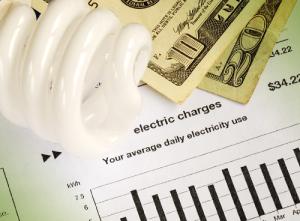Based on U.S. Commerce Department data released late last week, Public Utilities Fortnightly’s Electric Bill Affordability Index for July was 1.33 percent.

The Affordability Index for July was just a tick more than where the Affordability Index was for July of last year. That is, 1.33 percent for July 2023, versus 1.32 percent for July 2022.
Put another way, for every dollar that American consumers spent on all goods and services this July, in total, a penny and a third was spent on residential electric bills. That’s what the 1.33 percent translates into, in dollars and cents.
Consumers’ expenditures in total were eighteen and a half trillion dollars, annualized. Their expenditures on residential electric bills were two hundred and forty-six billion dollars, again annualized.
It is notable that expenditures on residential electric bills rose 6.7 percent this July from last July. However, expenditures in total rose at nearly the same rate, 6.4 percent. That’s why the Affordability Index was fairly steady, with just a tick increase.
The lower the Affordability Index, the higher the amount that consumers have available to spend on all goods and services aside from their electric bills. In other words, the Affordability Index tracks how much consumers can afford other stuff.
Historically, since 1959 when the Commerce Department started releasing the underlying data, the Affordability Index has fallen to as low as around 1.20 percent for a month. And it has risen to as high as around 2.60 percent.
In recent years, the Affordability Index has generally remained in the range of 1.20 percent to 1.35 percent. This July’s 1.33 percent came in within that range.
The Affordability Index is across all hundred and thirty million plus households in the U.S. How affordable residential electric bills are for individual households varies quite considerably.
When the Affordability Index is 1.33 percent, for example, this means that many households spend less than a penny on their electric bills for every dollar they spend for all goods and services. But many millions spend more than a penny and a half, and many millions more than two pennies, on their electric bills for every dollar they spend for all goods and services.


